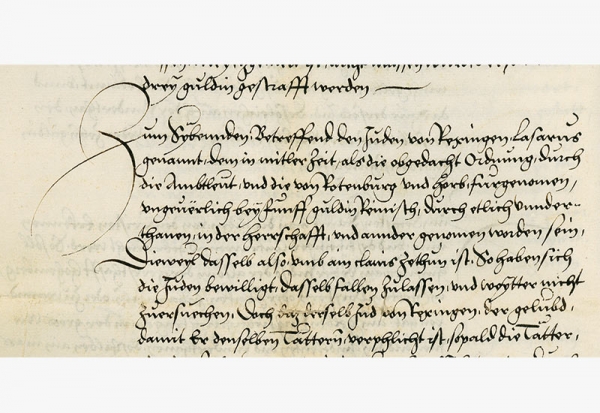Rexingen
The former independent community of Rexingen is today part of the town of Horb-on-Neckar. Rexingen has about 1300 inhabitants.
It consists of an upper and a lower village. The Jewish families lived mainly in the lower village, where the synagogue and the Catholic church are also to be found. The Christian families were mostly farmers and lived mainly in the upper village near the fields and the plateau which extends as far as Freudenstadt.
The earliest documented mention of Rexingen occurs in the first half of the 12th century where it is called Raggesingen. Also at this time noble freemen of Rexingen appear as benefactors of Reichenbach Cloister.
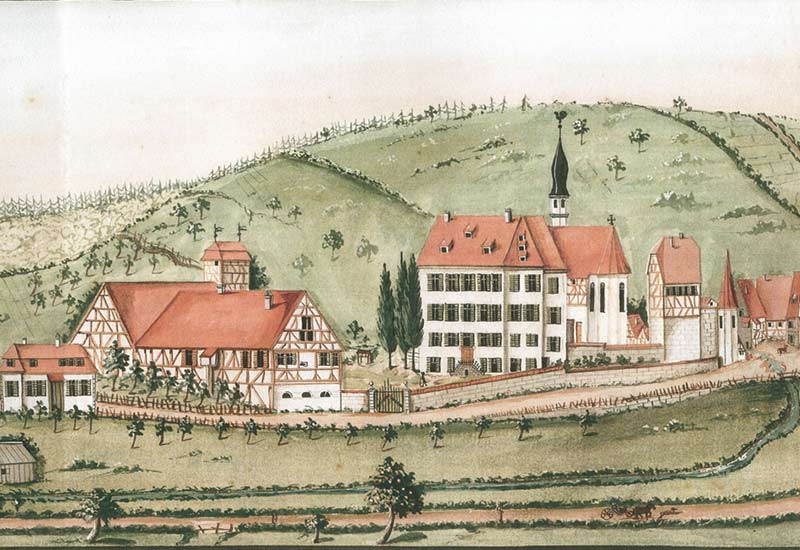
The order of the Knights of Saint John, first mentioned in Rexingen in 1250, became the legal successors and owners of Rexingen Manor. In 1290 the commandry of the Knights of Saint John acquired the village from the Boecklin family of Horb. Up to 1806, when Rexingen was annexed to Württemberg, the Knights of Saint John determined the course of life in the community. A commander was head of the small spiritual principality.
The Order of the Knights of Saint John had emerged from Hospitallers in Jerusalem. After the Conquest of Jerusalem in 1099 many crusaders joined this community.
Under the Regiment Ruling of Count Eberhard of the Beard, it was forbidden to Jews to settle in Württemberg up to 1806. Nevertheless the Knights of Saint John, while they were in power, allowed Jews to settle in Rexingen on payment of “protection money”.
The Jewish Community of Rexingen
The first record of Jews in Rexingen is to be found in the year 1516. The Jew Lazarus from Rexingen is mentioned in the Judenordnung of the Earldom of Hohenberg.
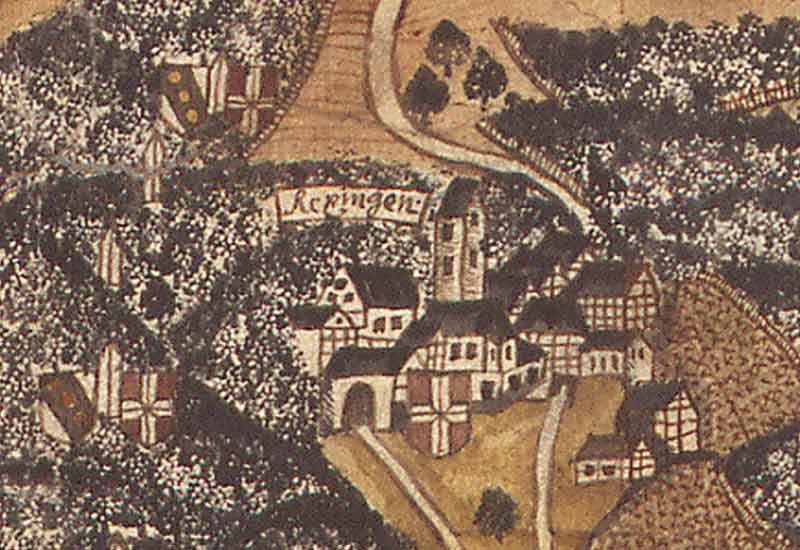
Around 1650: After Cossack pogroms in Poland and Russia many Jewish families fled to the west. Some names of Rexingen Jews reflect their origin: Pollack, Pressburger, Lemberger, Zürndorfer.
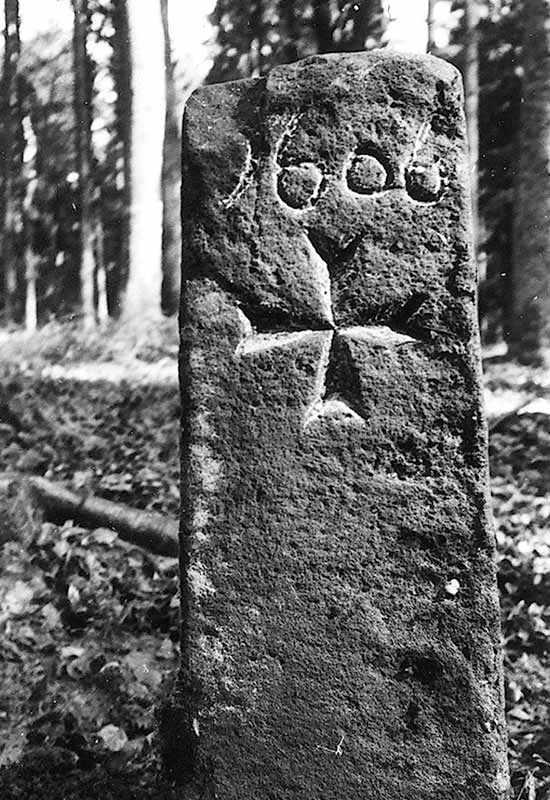
At the beginning of the 18th century the first synagogue was built. The community was part of the Mühringen rabbinate where the dead were buried as of 1720 after a cemetery, previously laid out in Rexingen, had to be abandoned due to flooding. Exactly where this first cemetery was situated is not known.
In 1760 the community received a burial ground on the spot where the present Jewish cemetery is to be found at the edge of the forest in the “Buchert” section.
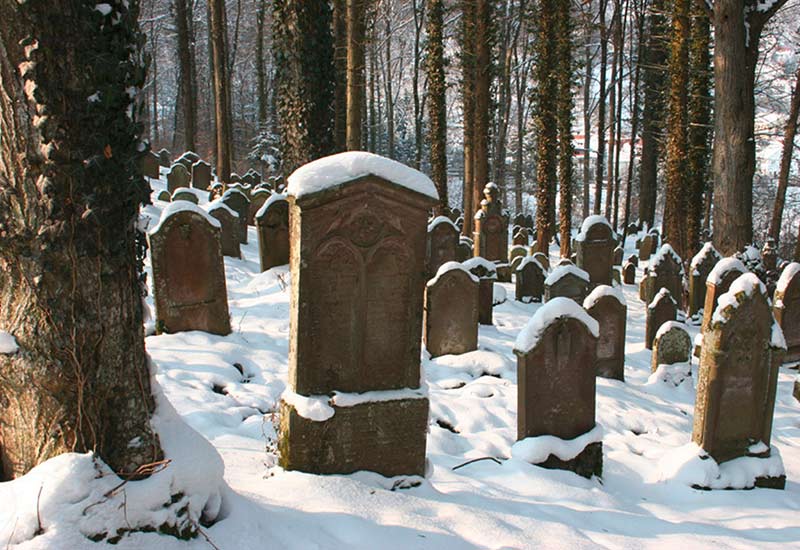
A flourishing community
By the year 1800 the Jewish community had grown to include 49 families and with its 240 members formed almost one third of the population of Rexingen.
In 1824 the school of the Jewish community was recognized as an elementary school by the State. Isaak Bickhardt was the first teacher. After a long dispute with the civic community regarding the schoolrooms and the teacher’s salary, the Jewish school could move into the schoolhouse as a “denominational school” in 1844. Up to 1938 a Jewish and a Catholic school co-existed under one roof.
In 1828 Jews became citizens of Württemberg under the Emancipation Act. At that time the Mühringen rabbinate to which Rexingen belonged was both in area and in numbers - with 1576 members - the largest rabbinate in Württemberg.
In 1837 the large new synagogue was inaugurated.
Around 1850 the Jewish community reached the highest percentage of inhabitants in its history with 427 members, i.e. 36% of a total population of 1,132.
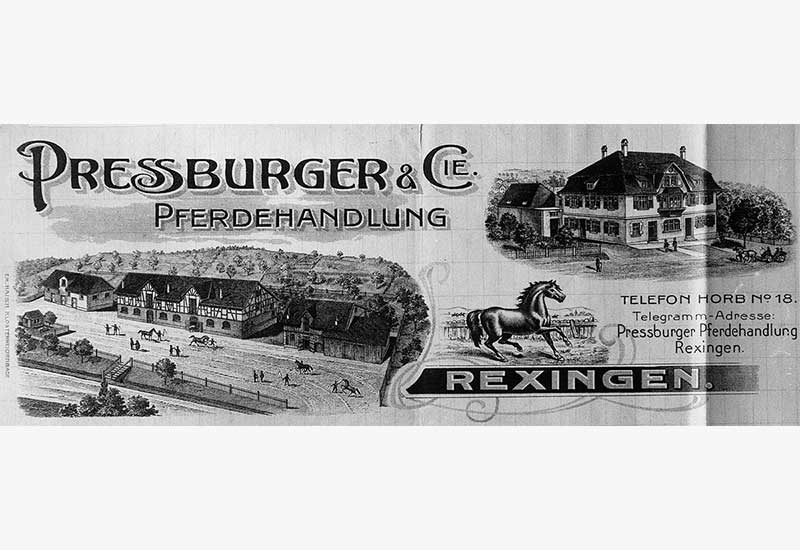
Around 1900, the Jewish citizens of Rexingen were foremost in promoting the modernization of the village: the setting up of an electricity supply, water pipes, a postal agency, first telephone connections and finally the establishment of a bus service travelling 5 times daily from Rexingen via Ihlingen to Horb Railway Station. In the mornings there was a service from Rexingen to Altheim Railway Station. Jewish citizens were now town councillors. They were active members of associations and of the local fire-brigade. In 1904 the councillor Adolf Zürndorfer was declared freeman of Rexingen.
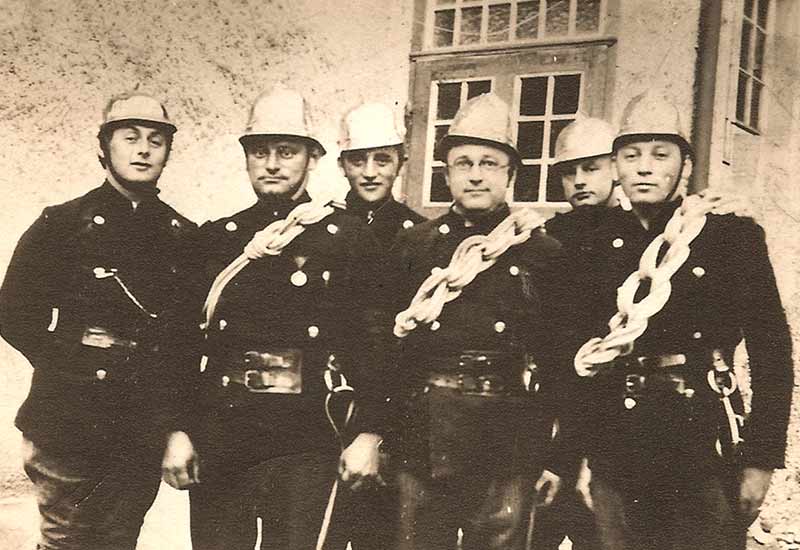
1914 -1918: In the First World War 105 Jewish men from Rexingen were conscripted. 78 of them served in the front line. 15 were killed.
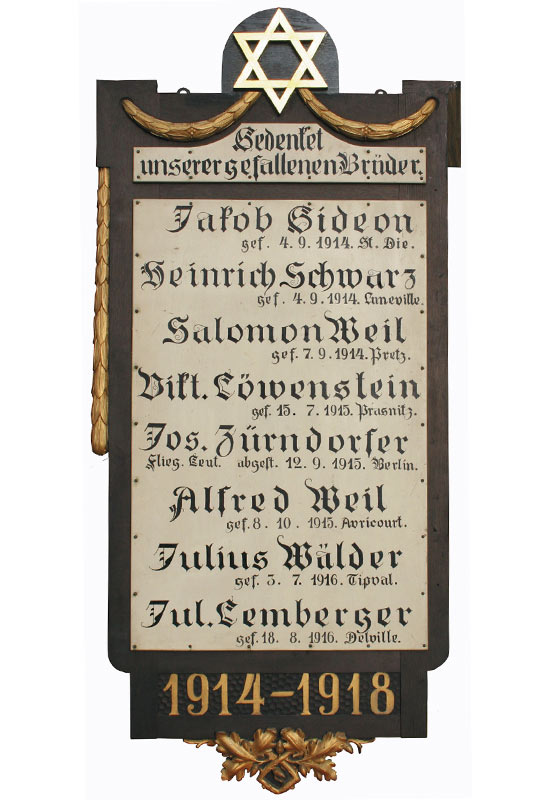
From 1919 to 1932 the economic situation deteriorated in Rexingen as elsewhere. The revenue from the Trade Tax went from 85,941 marks in 1927 down to 46,681 marks in 1931. Some Jewish families from Rexingen emigrated to America and others left for Palestine.
The extinction of the Jewish community under the Nazis
Before 1933 the NSDAP looked on Rexingen as an “impregnable fortress”. In the elections of March 1933, only 16% of the population voted for the Nazi party. After that the Jewish citizens felt the full force of the hostile politics of the Nazis. The last democratically elected Mayor, Hermann Kinkele, was removed from office. He was replaced by the young Nazi, Georg Schwörer. Alfred Levi and Alfred Pressburger were expelled from the committee of the choral society. A huge swastika was erected on a stone pillar above Rexingen. The Ministry of Education declared that the State would no longer share the costs of the Jewish school. The latter continued as a private school with 16 pupils.
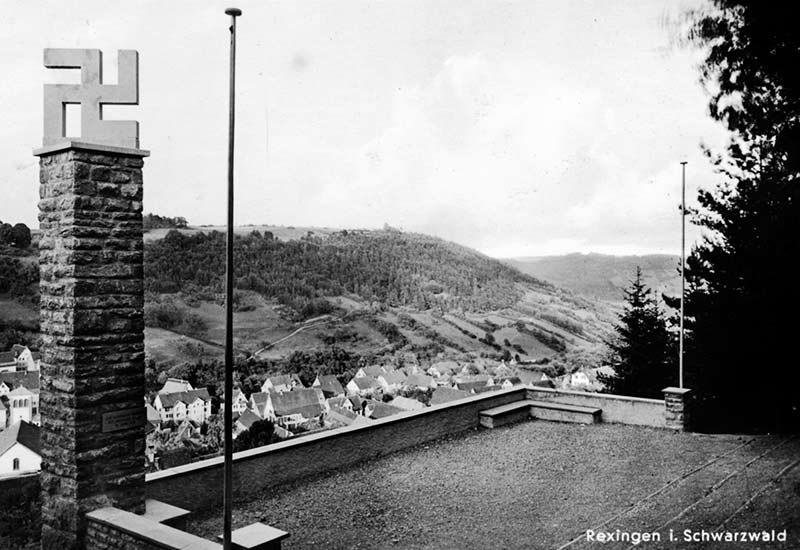
In 1933, the number of Jewish inhabitants still amounted to 262. Emigration to America and other countries increased. A larger group planned to emigrate together to Palestine. On Feburary 6th, 1938, a solemn farewell service was held in the Rexingen synagogue for the first group. On April 13th 1938, the settlement Shavei Zion (Return to Zion) between Akko and Nahariya was founded by Jews from Rexingen and other parts of Germany.
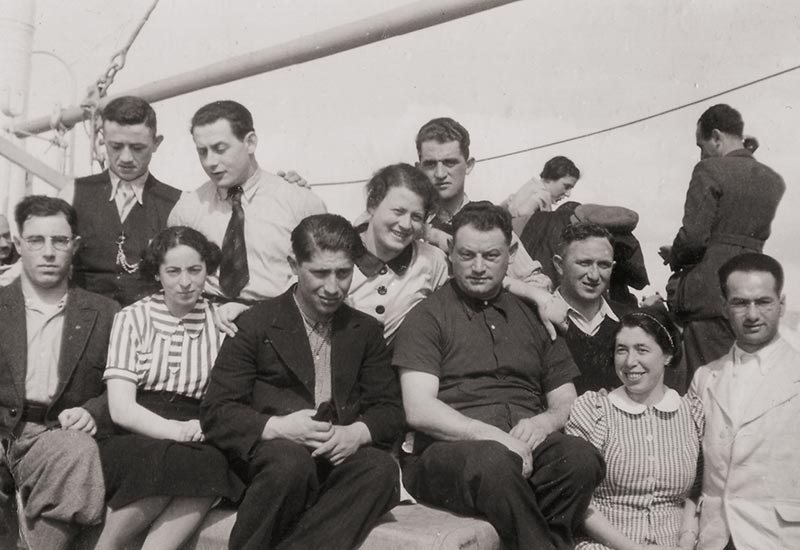
During the night between the 9th and 10th of November 1938, the Rexingen synagogue was set on fire by the SA and SS and the interior was destroyed. The local fire-brigade extinguished the fire. The building remained standing. A damaged Torah scroll was brought to Palestine by Viktor Neckarsulmer, chairman of the Jewish community.
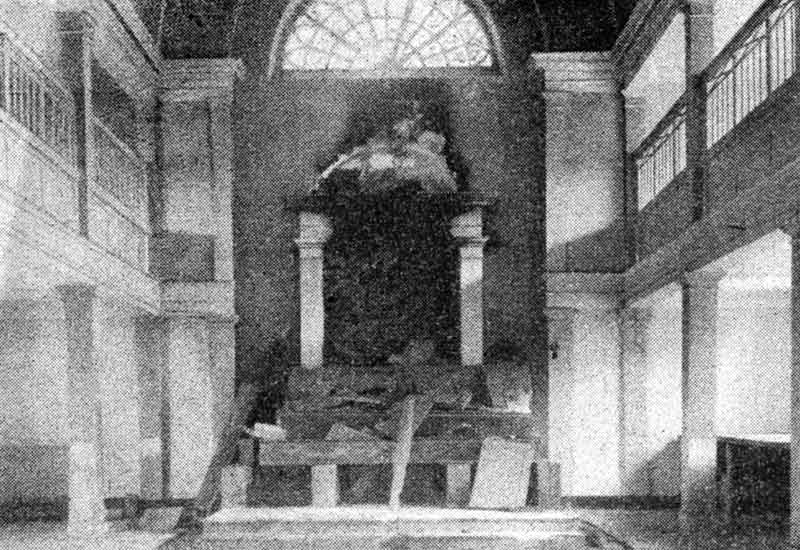
At the end of 1938 and the beginning of 1939, the last Jewish businesses were forced to close.
In the summer of 1941, emigration of Jews from Nazi Germany was completely forbidden.
On November 28th 1941, more than 60 Jews from Rexingen were deported to Riga in Latvia via Stuttgart Killesberg. There were only two survivors: Berta Schwarz and Sally Lemberger.
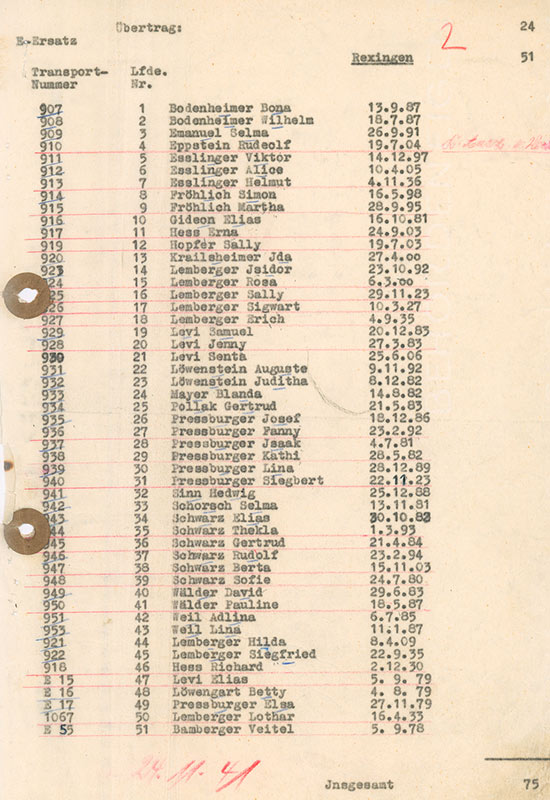
On April 21st, 1942, 7 Jews from Rexingen were deported to Izbica near Lublin in Poland. No one survived.
On August 19th, 1942, more than 50 mainly elderly Jews were deported to Theresienstadt. Only Hedwig Schwarz and Isidor David survived. Hedwig Schwarz had an accident during the transport to Theresienstadt and was brought to a hospital. She remained undiscovered there. She returned to Germany and died in 1952 in the Marienhospital in Stuttgart. She is buried in the Jewish cemetery in Rexingen. Isidor David was brought to Switzerland on February 5th, 1945. He died in a refugee camp there on December 1st of the same year.
August 19th, 1942, marks the end of the history of the Jewish community in Rexingen.
 Deutsch
Deutsch
 English
English
